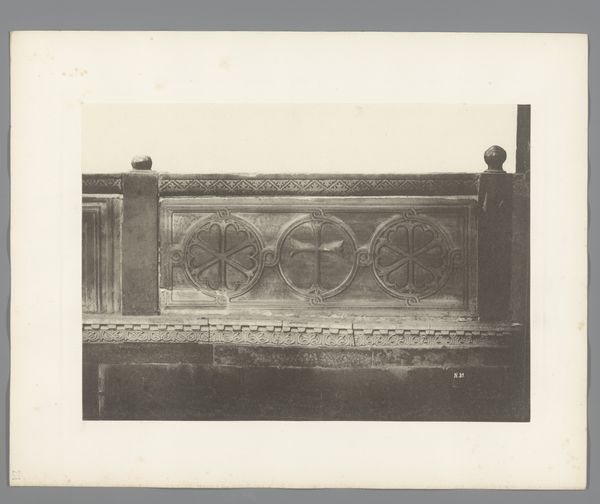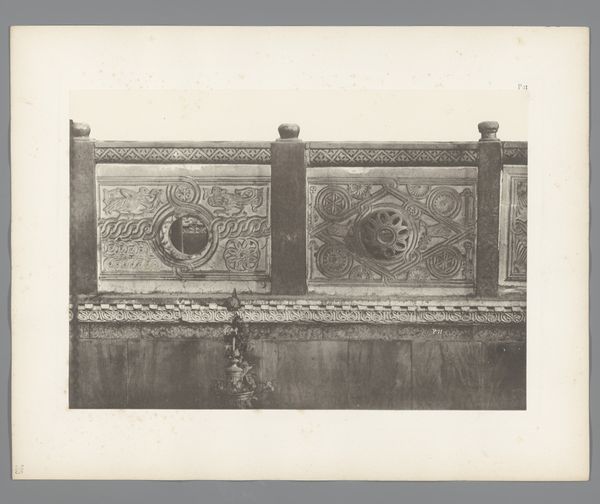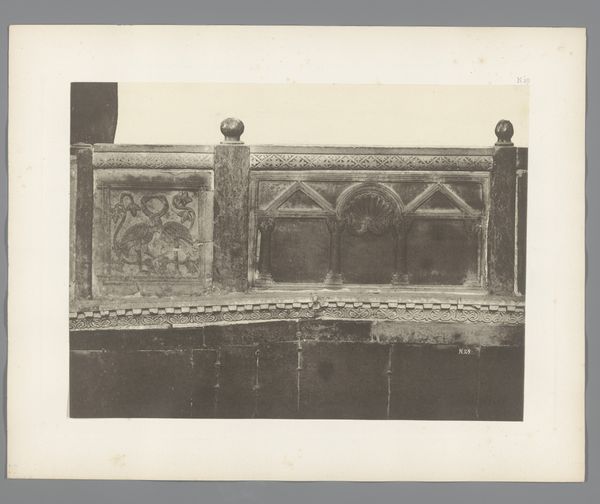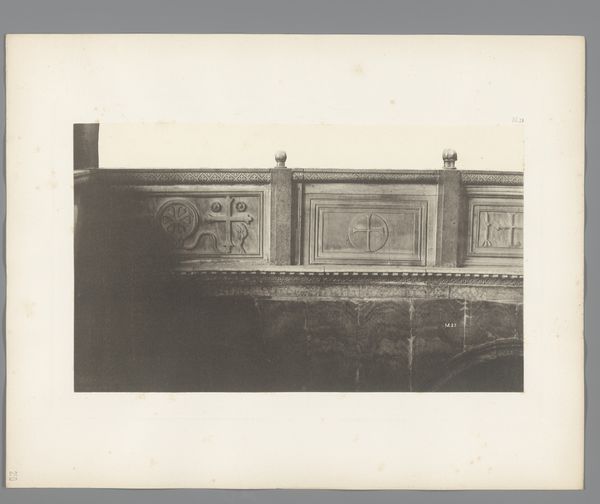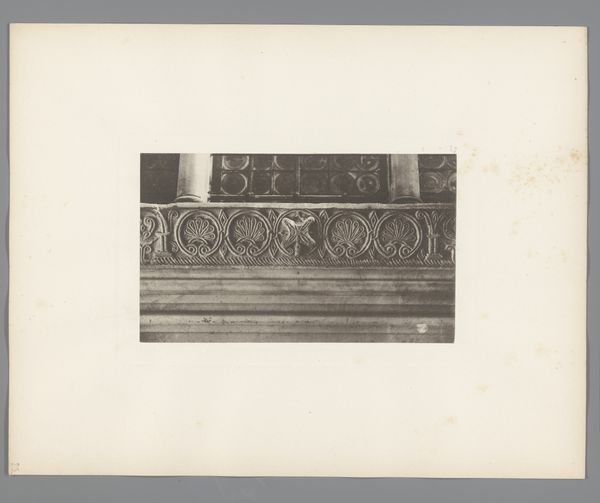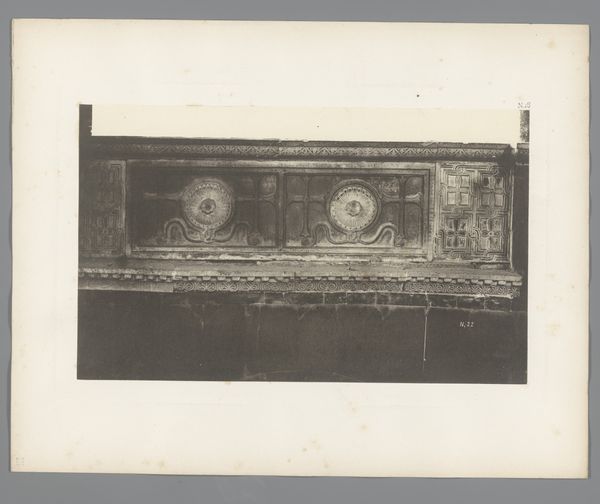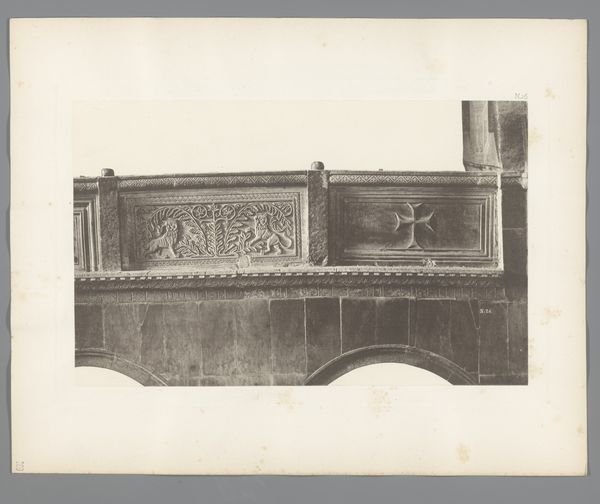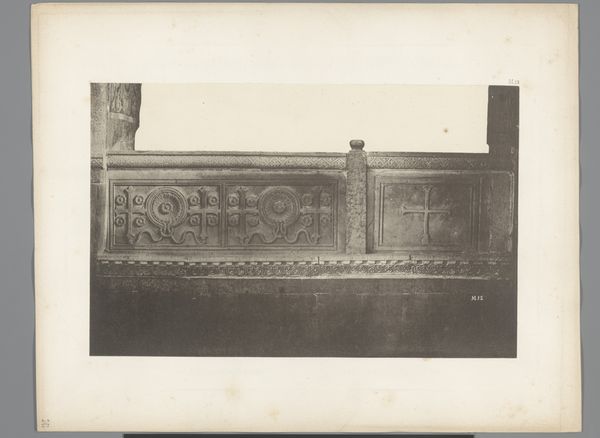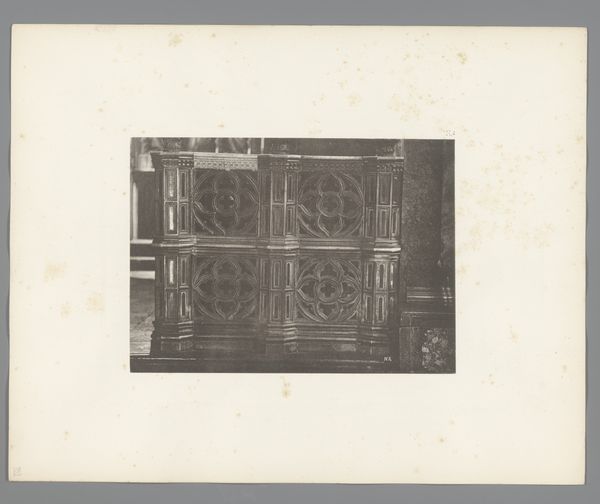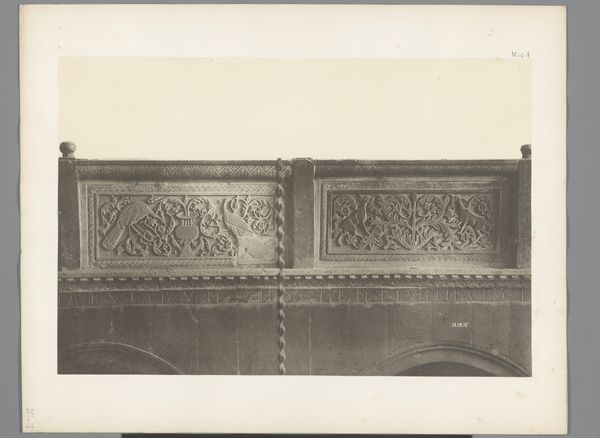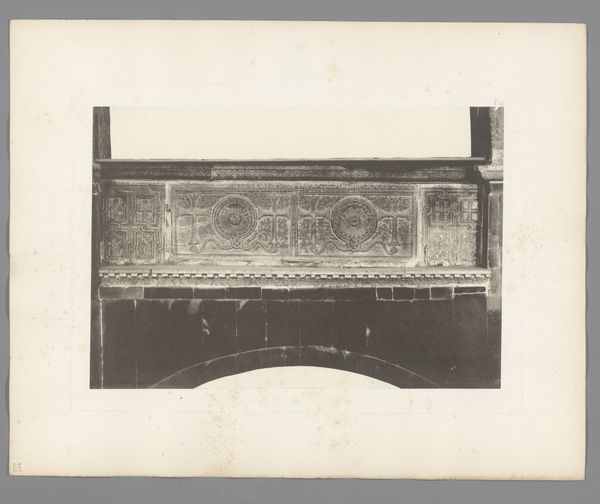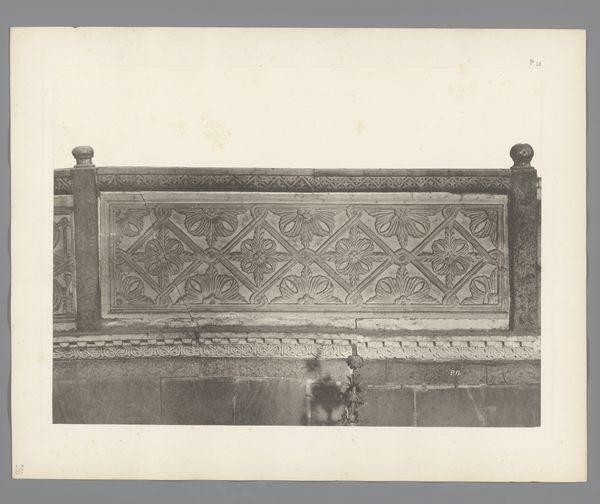
print, relief, photography, gelatin-silver-print, architecture
# print
#
relief
#
landscape
#
classical-realism
#
photography
#
geometric
#
ancient-mediterranean
#
gelatin-silver-print
#
architecture
Dimensions: height 310 mm, width 395 mm
Copyright: Rijks Museum: Open Domain
Curator: This gelatin-silver print, captured by Carl Heinrich Jacobi before 1885, documents a section of the balustrade from San Marco in Venice, showcasing a richly carved relief. It’s an early example of architectural photography used for documentation and preservation. Editor: Immediately, I’m struck by how the details of the stonework are revealed despite the limitations of the photographic process at the time. There’s an almost haunting stillness in the captured geometry. Curator: The architectural elements in the relief offer a symbolic program. On the left, we have lambs flanking a central design incorporating wings. The lamb often symbolizes innocence and sacrifice, tied to Christian iconography. What interpretations do you have? Editor: To me, the composition on the left reminds me of a heraldic emblem, laden with codified values about civic identity and power, alluding to Venice’s prosperity and religious devotion intertwined. Over on the right side we see an intricate circular carving featuring a cross. What's the cultural context of these images? Curator: Venice was historically a crossroads of cultures, straddling East and West. These symbols suggest the power and spread of Christian symbolism, while the geometric patterns may echo Byzantine influences prevalent in Venetian art and architecture. Jacobi's photograph acts as a silent witness to this complex history. Editor: Considering the time, this image raises some interesting questions about cultural heritage. Was it purely an act of preservation, or was there also a sense of anxiety about modernity impacting ancient cultural spaces, capturing them on film as a means of control? Curator: A potent question. Photography transformed how we relate to the past. Images like this one from Jacobi provided access and fueled historical narratives about Venice, helping to cement its identity as a city of ancient glory worthy of preservation. Editor: Absolutely. Thinking about it now, this photograph also hints at the dawn of mass tourism. Making such an artwork easily available for cultural tourism—while democratizing culture in some aspects—was also a political project aimed at the reinforcement of cultural identity. Curator: Indeed. It captures a moment where art history, photography, and cultural identity converge in fascinating ways. It also inspires you to observe San Marco's balustrade in person. Editor: For sure, this photograph opens doors for deeper analysis. It leaves me pondering about the enduring role of visual imagery in shaping public memory and preserving cultural history for the masses.
Comments
No comments
Be the first to comment and join the conversation on the ultimate creative platform.
